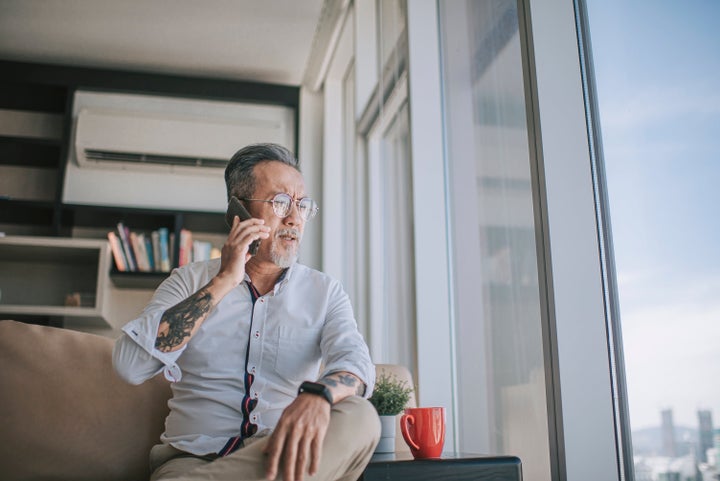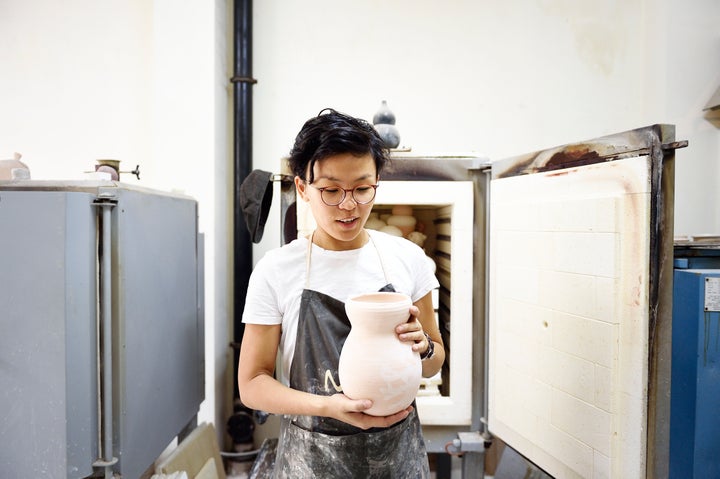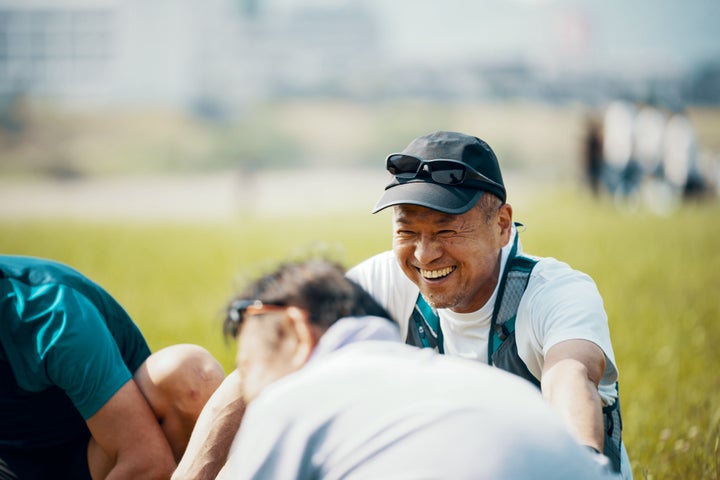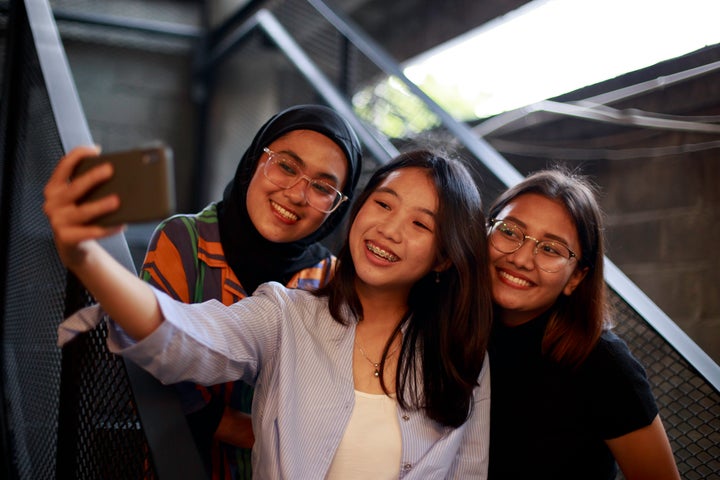Plus, what Asian American therapists say you can do to ensure it doesn’t have an outsized effect on your life.
The model minority myth just won’t quit ― and it’s hurting Asian Americans’ mental health.
The concept is deeply rooted in American history: Like most newly arrived ethnic groups, Asian Americans and Pacific Islanders were seen as outcasts and faced fierce discriminatory laws when they first arrived in the United States in the mid-19th century. They were deemed a “yellow peril” and seen as unclean and unworthy of U.S. citizenship.
But by the 1960s, Asian Americans were being portrayed as a U.S. “model minority” ― a group whose diligent work, personal responsibility and accomplishments proved that the American dream was attainable by all.
The model minority myth has obvious harmful effects on the racial and ethnic minority groups it leaves out. By casting Asian Americans as wholesale immigrant success stories, those who believe America is a colorblind society can downplay racism’s role in the persistent struggles of other marginalized groups in the U.S.
But the model minority idea also hurts Asian and Pacific Islanders themselves. Stereotypes about Asians have proved to be very problematic when it comes to the handling of recent anti-Asian hate crimes amid the COVID-19 pandemic; it’s not very model minority-like to draw attention to the rampant verbal and physical discrimination your community is facing.
Below, therapists who specialize in Asian American mental health share ways the myth flattens the experience and negatively affects the mental health of those in the AAPI community.
1. The expectations for academic and career success can feel impossible to meet.
“Intelligent.” “Hard-working.” “Nice.” Those were the most-invoked adjectives when respondents were asked to describe Asian Americans in a recent poll by LAAUNCH, a nonprofit that researches issues in the Asian Americans community.
The myth that Asian Americans are all intelligent, polite hard workers can make you feel pretty subpar and slacking if book-smarts and ease in interpersonal relationships don’t come easily. If you aren’t stereotyped, you have the privilege of defining success in your own terms; living under the tight confines of the model minority narrative, the metrics for success are pre-set and sky-high.
The stress associated with this starts early on. When your identity is tied to success, a B or C+ on a midterm might throw you into a tailspin and leave you questioning your self-worth.
“The myth puts undue pressure on us, but it also undermines the work it took to get there when we reach our goals,” said Janet T. Phan, the founder and executive director of Thriving Elements, a STEM mentorship program, and the author of “Boldly You: A Story about Discovering What You’re Capable of When You Show Up for Yourself.”

2. The myth suggests Asian Americans face less racism than other people of color.
The model minority myth conveniently overlooks the violence and systemic racism Asian Americans face, like any other minority groups.
COVID made it impossible to overlook it. Since the pandemic began, the reporting forum Stop AAPI Hate has tracked nearly 11,000 hate incidents against AAPI people from March 19, 2020, to Dec. 31, 2021, and the FBI has reported a spike in such hate-motivated violence as well.
“The myth that if we keep our head down and work we’ll gain acceptance and belonging has definitely not been true these past two years, where we’ve been the target of hate crimes despite years of overwork and invisibility,” said Han Ren, a psychologist in Austin, Texas.
Asian know all too well that racism toward the group exists, but because of the model minority myth, individual stories of discrimination or ostracism are often dismissed or minimized, said Lia Huynh, a marriage and family therapist in San Jose, California.
“People feel like we excel academically and make a lot of money, therefore we must not face systemic racism,” she explained.
3. At the same time, the model minority myth hides the economic realities of many Asian Americans.
That leads us to our next myth within a myth: Not all Asians are rich. The prevalent belief that all Asians are high-achievers and high-earners belies the poverty so many within the community face. Asians in the U.S. have the greatest wealth gap of any ethnic group, according to a 2018 report by the Pew Research Center. Those in the top 10% of income distribution earn nearly 11 times as much as those at the bottom, a disparity that has been taking root since the 1970s.
Huynh said that “for as many households earning above median income, there are just as many earning significantly below.”
“We are not a monolith, and the educational attainment and immigration stories of our various communities have a large impact on earning potential and the types of jobs we hold,” she said.
As NBC News reported in October, in urban areas like New York City, some of the most common industries for low-income Asian Americans are restaurants and food services, taxi and limousine services, and nail salons and other personal care services.
For those who do hold professional jobs, there’s the “bamboo ceiling” to grapple with. A play on the “glass ceiling” ― and a term many Asians don’t love because of the stereotypes it plays on ― the “bamboo ceiling” is the invisible barrier that systematically keeps Asians out of leadership positions in spite of success in the workplace and in school.
“Many of my clients tell me that they feel they’ve hit that ‘glass ceiling,’” Huynh said. “Oftentimes Asians are not seen as leaders because they have a stereotype of being non-confrontational and not being able to push a company forward. As a result, they are stuck in lower-level positions than their white counterparts because they do not look like or talk like their white counterparts.”

4. They’re less likely to seek out mental health help.
Culturally, many Asian Americans are taught to internalize feelings and not seek outside help, even if it means quietly struggling. The model minority myth further suggests you have nothing to complain about.
“Many Asian Americans suffer from things like depression or suicidal ideation and are unable to seek help because of the shame that comes with it,” said Kevin L. Nadal, a professor of psychologist at the City University of New York and author of “Microaggressions and Traumatic Stress.” “Others who have difficulty succeeding may develop mental health problems because of unrealistic pressures they feel from themselves and/or their families.”
Asian Americans are the least likely racial group in the U.S. to seek mental health services, and when they do, they face cultural barriers. According to one study, AAPI clients have reported lower service satisfaction and less confidence in their provider, attributed to a lack of culturally responsive therapy.
5. Not all Asians are considered model minority enough.
The model minority myth doesn’t see all Asians as equal.
“For Southeast Asians, we may be pressured to adhere to the model minority while also being told we aren’t Asian enough because our groups may generally struggle with things like educational attainment,” Nadal said.
Growing up, Nadal, who’s Filipino, said he never really felt the pressures of the model minority myth because his teachers and others didn’t necessarily expect him or his other Filipino peers to do well.
“Nonetheless, the model minority did and does still bring stress because it dictates who is included and celebrated in the community and who is excluded,” he said. “That has led to feelings of sadness, isolation or being misunderstood.
6. They fall into careers and fields they’re disinterested in.
There’s another myth about Asians, one that says they’re especially gifted in STEM (science, technology, engineering and mathematics) fields. Many times, there’s undue parental pressure, too; the cliche is that your Asian parent expects you to “be an engineer, doctor or lawyer.”
The myth that all Asians excel in STEM fields affected Huynh growing up in San Francisco and attending a fairly competitive high school.
“There were a lot of Asians there, and I did not like math or science. I felt out of place because I wanted to do drama and write and talk about the meaning of life,” she said. “All of my friends were taking calculus and AP chem ― some of them because they wanted to and others because it was expected of them. I felt like I wasn’t as smart. But in the end I found my own way and love encouraging others to do what they love.”

7. It distances people from their culture.
Assimilation is the ultimate goal of the model minority success story; as a result, you often lose ties to your culture.
Ren knows that firsthand. Coming to the U.S. at age 6 to join her parents who immigrated three years earlier on her dad’s graduate student visa, a young Ren tried everything she could to fit into her predominantly white, progressive college town.
Ren’s experiences growing up with traditional Chinese parents made her rebellious and ashamed of her heritage: She grew to hate the competitive way all Asian parents seemed to talk about their kids, comparing their teens’ summer internships and grades.
“I actually felt proud when my Asian friends called me a ‘banana’ or ‘Twinkie’ in high school. It was a sign to me that I could fit in and ‘pass’ in white circles,” Ren said. “By the time I got to college, I wanted to separate as far as I could from my Asian roots.”
At her university, she almost exclusively spent time with white people, dated white men and got involved in the Panhellenic Greek system, believing doing so meant she “made it” and had successfully escaped her Asian-ness.
Instead, Ren said she felt lonely and lacked a sense of belonging. Microaggressions ―the casual insults and demeaning verbal and non-verbal messages encountered by people of color by sometimes even well-meaning people ― were rampant. Ren played into them because she thought this was the easiest way to distance herself from her background and gain quick acceptance.
“It wasn’t until after college, when I moved cross-country alone for work, that I finally started to reconnect with my roots and move along in my racial identity development,” she said. “Keeping my head down and leveraging proximity to whiteness did nothing to make me any whiter.”
How To Combat The Model Minority Myth In Your Own Life
If all of this resonates, there are ways to fight back against the concept. Below, therapists offer some advice.
1. Take ownership of your individual accomplishments.
When you’re successful in an endeavor ― acing a final or advocating for a raise ― individualize the success. You did that. A spot at the table is not guaranteed, and it absolutely took hard work.
For instance, looking back now, Phan recognizes that everything she achieved as the daughter of Vietnamese refugees was on the basis of her hard work, not by virtue of her Asian-ness.
“My parents didn’t have the information or resources to help me academically or professionally. I had to show up for myself,” she said. “I knew no one was going to do it for me ― but that doesn’t mean my path was easy or that I was destined for greatness.”
On her own, Phan had to build a network of people she trusted, who knew the system and could pave a way of access for her. But without her hard work, they wouldn’t have opened the door for her.
“I had to work incredibly hard to get where I am today,” she said. “During high school, I worked at two KFCs, Hollywood Video and even lived out of my car to make ends meet so I could pay for tuition, room and board at my university.”

2. Realize the roots of the model minority myth.
Remember: With the model minority myth, it’s not personal, it’s political. If parts of the myth feel foreign to you, it’s because it wasn’t created with an understanding of the nuances and everyday experiences of actual Asian American people.
“It was meant to teach Asian Americans that they were better or smarter than Black, Latinx, and indigenous people, which in turn led to hostilities between the communities in general,” Nadal said. “I really hope Asian Americans realize that this myth was created to pit Asian people against other communities of color.”
3. Embrace your culture.
Assimilation might have caused you to pivot away from your culture. To counter that, immerse yourself in lived experiences that celebrate your background, not just books and movies that are heavy on positive representation. (Though those are great, too!) Think: a standing dim sum date with your grandma, going to a yearly Oshogatsu celebration with lion dancing (shishi-mai) and live taiko drumming, or getting your kids involved in making your own rangoli floor art for Diwali.
4. Invest time to build and maintain a great support system.
It’s important to have someone to talk to about this kind of stuff ― a tribe of people who know how exhausting the myth is and actively want to step outside of it, Phan said.
“When you encounter these stereotypes, it’s imperative to voice your feelings and frustrations to someone you trust so they can help you cope with the impacts of it,” she said. “If you keep holding on to these stereotypes that you know aren’t true, it can be a lot of weight to carry. ”

5. Find a therapist who specializes in Asian American mental health.
While it’s entirely possible to find a white therapist who’s culturally competent enough to deal with experiences unique to the Asian American experience, many may never bring up a difference in race or ethnicity due to their own discomfort or lack of awareness.
“I have spoken with many Asian American females whose white therapists never referenced or inquired about how they’ve been impacted by the anti-Asian hate incidents or the Atlanta spa shooting,” Ivy Kwong, a psychotherapist specializing in AAPI mental health and healing intergenerational trauma, told HuffPost earlier this year.
“As clients, they’ve felt extremely uncomfortable in sessions having to bring it up themselves or they’ve not brought it up at all because they felt their therapist couldn’t offer them a space of comfort or knowledge,” she said.
It’s exhausting to do that kind of emotional labor in your own therapy, so don’t feel bad if you want to seek out a therapist who works predominantly with Asian Americans and Pacific Islanders. (And you’re in luck! We just wrote a guide on how to find one.)
“Therapy should be a space that is for you, where you can rest or fall apart and be as you are,” Kwong said.
6. Educate others by talking openly about your experiences.
Don’t hide away the struggles you face as a result of model minority presumptions, whether you’re around other Asians or non-Asians.
“Sharing stories is such a good way to bring awareness in a non-judgmental way,” Huynh said. “Talk about it freely. Then we have to dare to live our authentic selves, dream big and not allow ourselves to be bound by these stereotypes. Sometimes we keep ourselves there when there’s no reason to.”
Credit: Source link